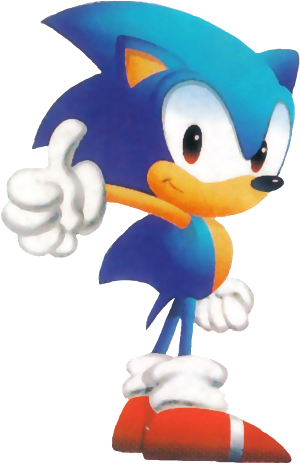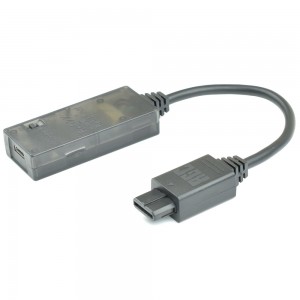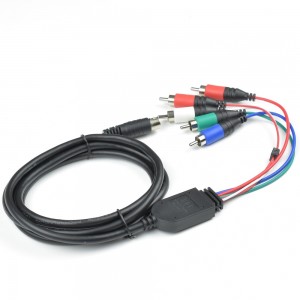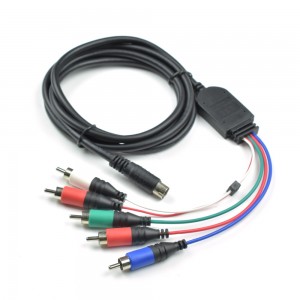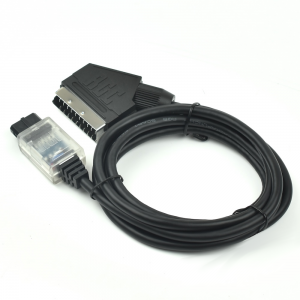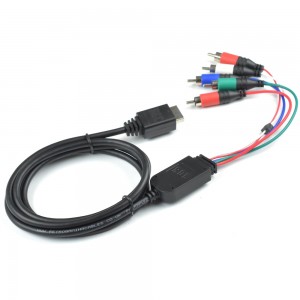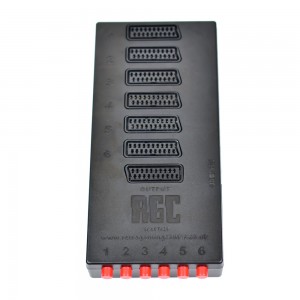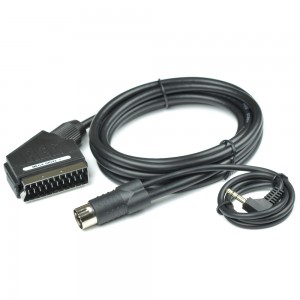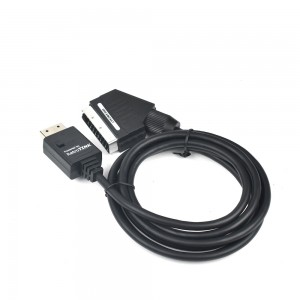Universal Nintendo MultiAV SCART cable
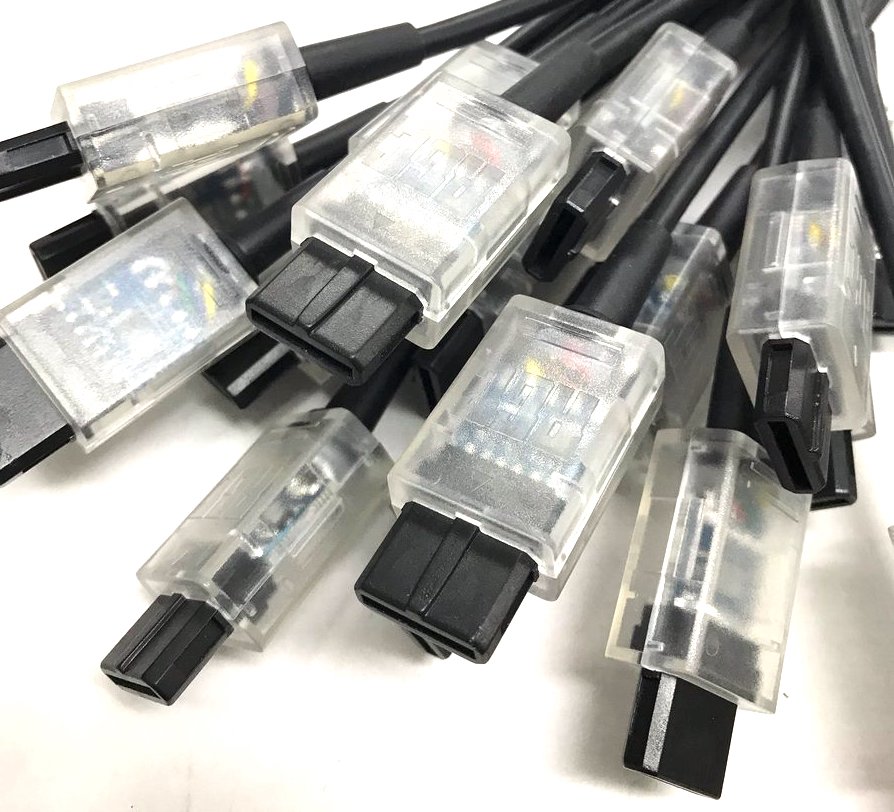
Now available for purchase here.
Mission Statement
To create a one-fits-all SCART cable solution using the Nintendo proprietary 16 pin MultiAV connector for use on Super Nintendos, GameCubes and Nintendo 64s which all output RGB video and without compromising on signal quality. This should also work on region free modified consoles.
Back Ground
If you have read our Nintendo Audio / Video cable guide or you are a true retro gamer you will be aware that currently separate RGB SCART cables are required for the PAL Super Nintendo and NTSC Super Nintendo / Super Famicom. Unlike the original composite A/V cables shipped with these consoles which are cross compatible somewhat between the PAL/NTSC SNES, PAL GameCube and N64, when it comes to outputting RGB video thats when Nintendo muddied the waters some what.
For starters, the Pal SNES requires resistors on the RGB lines inside the SCART cable however the NTSC SNES, Super Famicom and Pal Gamecube require capacitors instead. Therefore if you try and use a purpose built PAL RGB SCART cable on an NTSC SNES or vice versa it will result in the image either being washed out or fading to a black screen. Technically you can use a Pal Gamecube on an NTSC SNES and Super Famicom, but if you have a dedicated NTSC SNES cable wired for CSYNC on pin 3 of multiAV plug this will not work on a PAL Gamecube. Yeah its messed up I know. Please see the video below where Rob demonstrates what happens when you plug incorrect cables into Nintendo systems.
FYI, the NTSC GameCube does not output RGB video via the traditional AV OUT socket, so is not part of this universal RGB SCART problem, however there are a few popular plug-in solutions and internal modifications that have come onto the market within recent years called the GCHD. All these extract component (YPbPr) video from the digital port of the GameCube, and some of these after market add-ons also allow users to extract analogue RGB video from their console as well, which is great for people to want a dual digital / analogue output for playing on a CRT using RGB out whilst also live streaming/recording the digital output via an Elgato for example. And guess what the choice of AV socket was decided on for the analogue RGB output for the GCHD MK-ii?, that's right, a Nintendo Wii socket! So you will need a PAL Wii RGB SCART cable to get analogue RGB from your NTSC GameCube. Are these guys on Nintendo's payroll?
And when it comes to RGB modified N64 consoles it becomes even more ambiguous, as some but not all modifiers tend to install RGB boards inside the N64 console and sell them to customers without advising on what SCART cables are compatible with their particular installation. I know first hand as I often receive emails and phone calls from customers who have purchased one of these consoles from a seller on a popular auction site without knowing what cable to use. And the first thing I say to them is "ask the person who did the installation", to which they reply, "I have already and they don't know. They told me to call you!".
Development
The development came about due to another project that we are currently working on, so the Universal Nintendo cable was an unexpected offshoot of this other project. Once it was realised that a Universal cable was possible the first circuit board revision was designed and prototype boards where manufactured. Due to the many different types of RGB modification boards available for the N64 and SNES Jr / mini it would have been a massive task to source all these different RGB boards and consoles for testing the cable on, so Rob had a fantastic idea of recruiting Beta testers from across the world to test the Universal cable and in return they received a free cable! So we asked for Beta testers on Twitter and managed to find 50 testers prepared to help the cause.
Due to feedback from the testers we are now on the 3rd and final board revision which is ready for manufacturing.
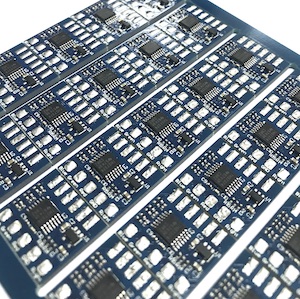
Final PCB design
However due to the size of the circuit board we had to have a custom shell designed for the connector, see below. Which is longer than a regular SNES connector and also longer than our SNES over-moulding tool, therefore we had no choice but to have a custom shell made, which then gave us the opportunity to use transparent plastic to show off the circuit board inside!
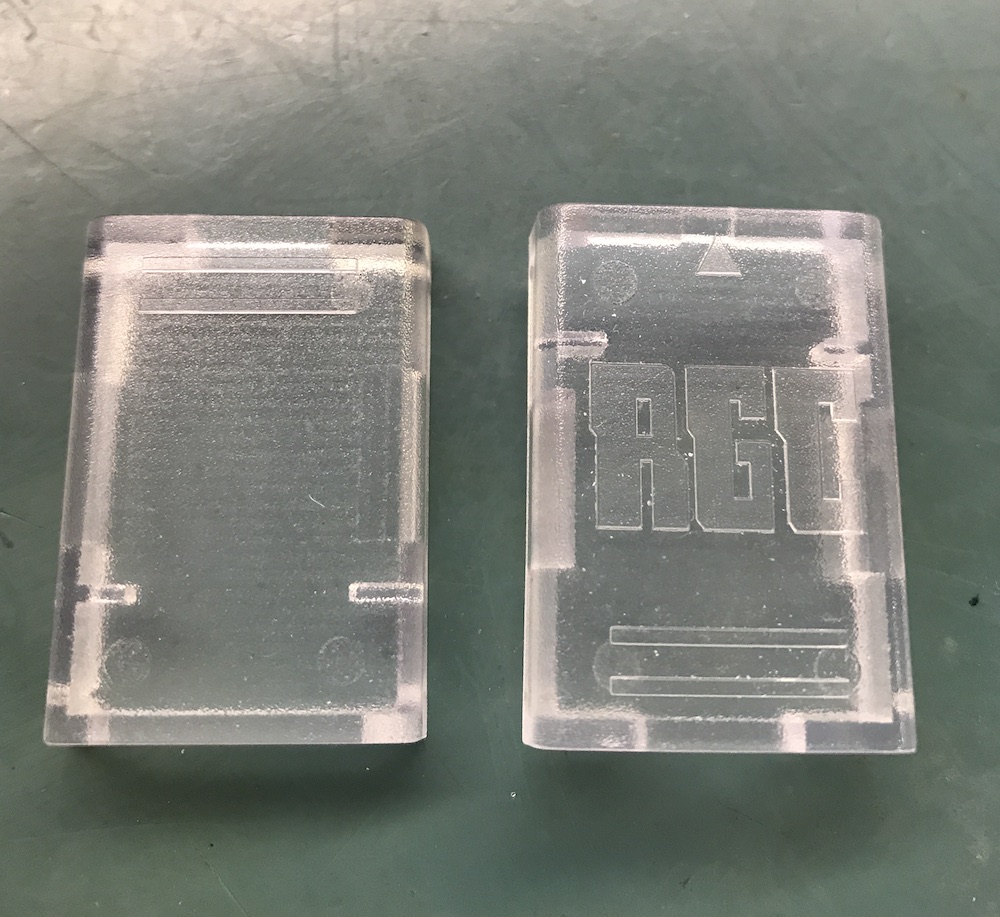
Custom made top and bottom shell to accommodate the circuit board
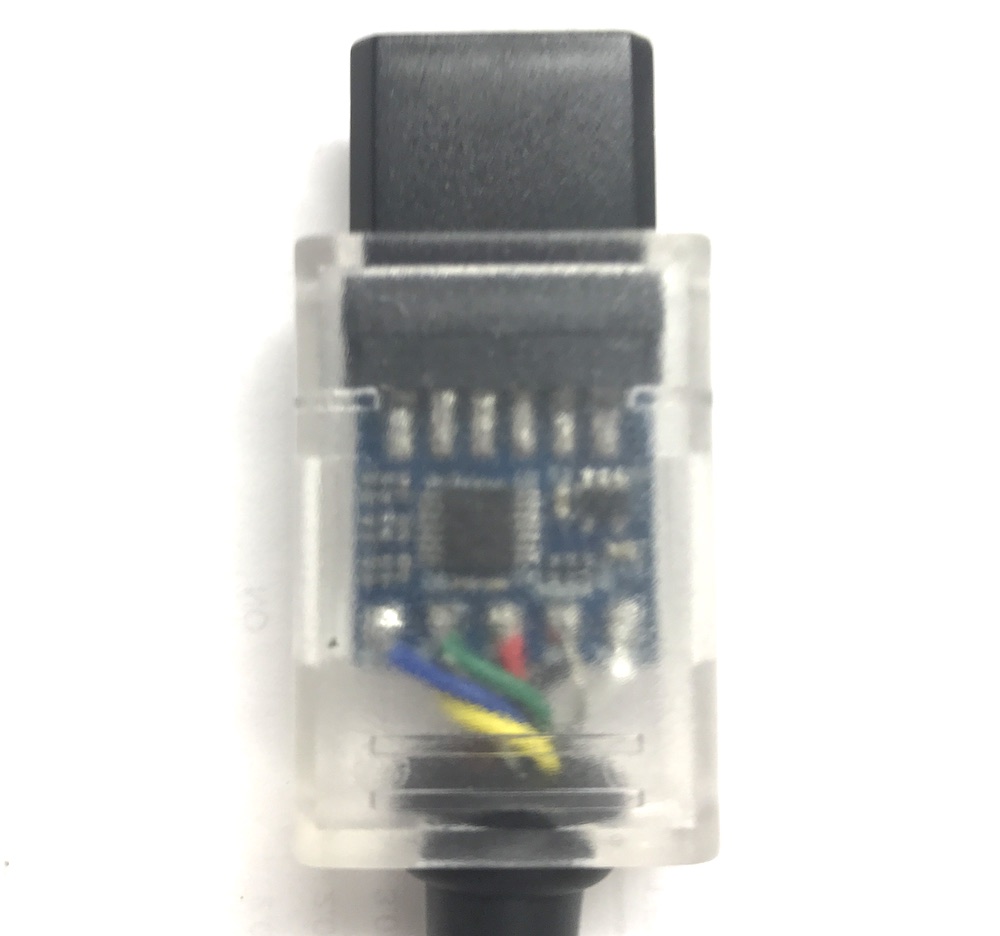
Circuit board inside connector
Also we required a new mould to create the strain relief as seen below indicated in purple. This moulding tool is designed to be used also with our Sega Dreamcast RGB SCART 480p cable.
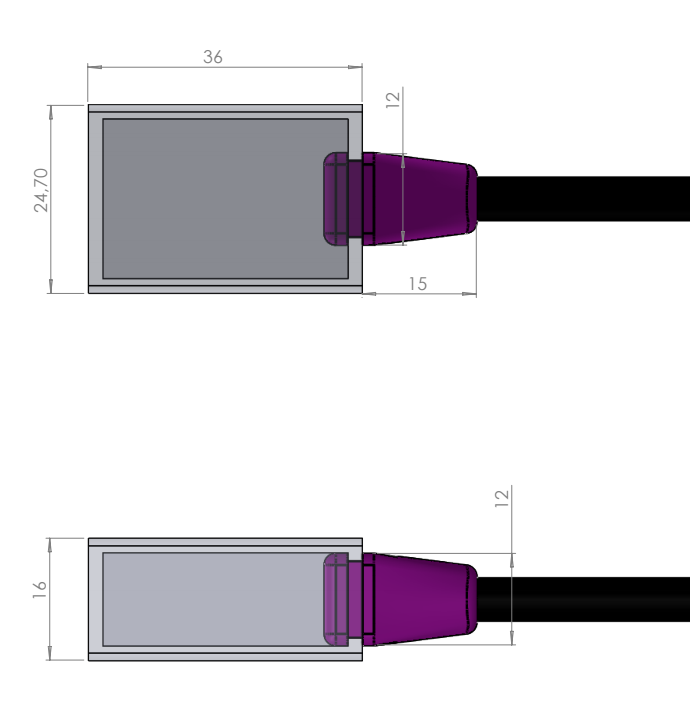
Strain relief for Universal Nintendo cable and also our Sega Dreamcast 480p SCART cable
Amendments made to the design included the removal of the LM1881 chip, which was used to achieve a CSYNC signal from pin 9 of the multiAV socket, however, since we will only be using a fully shielded cable any cross-talk will not be an issue so there is no need for an LM1881 sync separating circuit. This was verified using a Datapath video capture card. The DC biasing was adjusted as the image on the GameCube was a little dark which we noticed on our test rig and was also reported to us by Beta Testers and the pads for the connector pins where elongated to make it easier to solder the MultiAV connector to the circuit board.

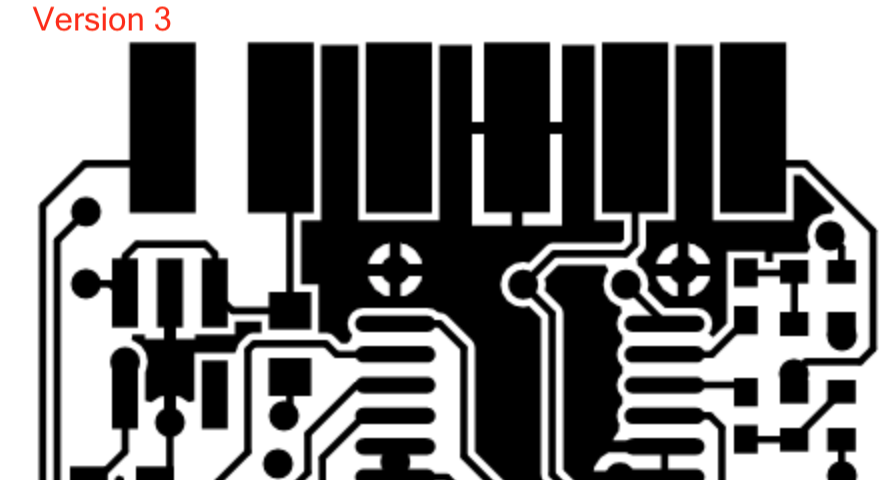
The 12 pads (6 on either side) where lengthen
How to Guides
Nintendo Audio / Video connection guide
Sega Audio / Video connection guide
How to hook up retro consoles to High Definition TVs via HDMI
A/V Cable trouble shooting guide
SCART to HDMI Converters to Avoid!
Projects
Nintendo Universal Nintendo MultiAV SCART cable development updates
Sega Dreamcast RGB SCART cable development updates
RGB to Component YPbPr cables Powered By RetroTink
RGC SCART Switch
Testing
Hydra 2 SCART switch sync testing
Professional RGB monitor compatibility list
Technical info
Demystifying RGB & Sync
Composite SYNC (CSYNC) cables
EuroSCART vs JP21
Featured
Super Nintendo GameCube RAD2X RetroTink HDMI® cable
This is a pre-order item only, which will ship during the month of April 2025.The RAD2X is..
£54.99
Sega Mega Drive 2 / Genesis 2 Component YPbPr cable Powered by RetroTink
Component YPbPr cable for the Sega Mega Drive 2, Genesis 2 and 32X, for connecting to televisions wh..
£39.99
Sega Saturn Component YPbPr cable Powered by RetroTink
Component YPbPr cable for the Sega Saturn, for connecting to televisions which support 240p via comp..
£39.99
Universal Nintendo RGB SCART cable powered by RetroTink
The worlds first truly universal Super Nintendo RGB SCART cable which will work on bo..
£49.99
Sony PlayStation 2/3 Component YPbPr cable
Component YPbPr cable for the Sony PlayStation 2 & 3 only (not PS1), for connecting to televisio..
£19.99
Manual SCART621 Switcher
This is a pre-order item only, which will ship during the month of April 2025.Plug and pla..
£59.99
Sega Mega Drive 1 / Genesis 1 RGB SCART PACKAPUNCH PRO CABLE WITH STEREO SOUND
Level up with a PACKAPUNCH PRO RGB SCART! This cable supplies an RGB video signal and stereo sound f..
£24.99
Sega Dreamcast RGB 480p SCART cable Powered by RetroTink
An all in one cable solution for playing Dreamcast games in 480p mode via RGB SCART. This incorporat..
£49.99
 International Shipping available
International Shipping available
